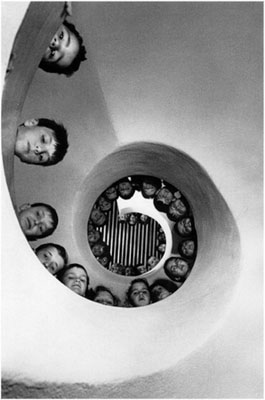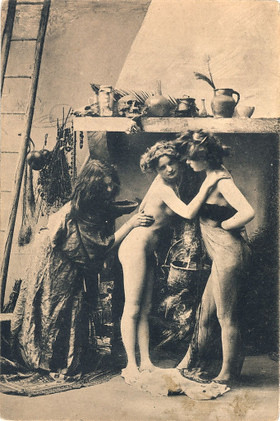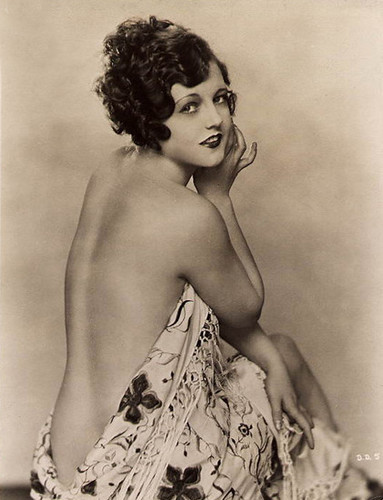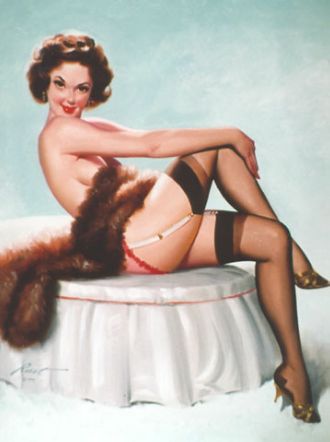As an aside;
I have a friend in Corfu who has a "comfortably appointed" home and contemporary Ionian taste is like super-bling popped in a cut-crystal case and sat on a lace doyley. One can trace that stylistic tendency back through Byzantium and Rome almost 2/3rds of the way to Hellenic times.
I think it's reasonable to assume the Classical Greek on the 49 omnibus shared that "bling" type of taste, not the acres of pristine white marble one sees in the national gallery but his culture would however have been more earthy, there are an awful lot of art containing ladies with there bits out and Greeke with large fallacies that the Victorians either didn't loot or hid when they came back from the grand tour.
Not only that, but an awful lot of that marble was originally gilded in all sorts of garish ways.
ferider
Mentor
I also think the rule of thirds is more about avoiding the rule of halves (that is, the rule of thirds is not mathematical; it works just as well if the object is placed, say, 2/5ths from the edge, rather than exactly 1/3rd).
2/5th, 1/5th, 2/5ths is closer to the golden ratio than the rule of thirds; which is why it works better, classically speaking
Good thread, Stewart.
Roland.
Sparrow
Mentor
Not only that, but an awful lot of that marble was originally gilded in all sorts of garish ways.
Yes, although the Elgin marbles (the stones from the parthenon's tympanum) have apparently not been decorated.
it was the temple on Delos that made me realise we didn't get the whole story at school
Last edited:
Sparrow
Mentor
The Golden Ratio
Pythagoras and the first irrational constant
The Greeks liked order and whole numbers so they must have been v pissed-off when Pythagoras came up with the √2 as 1:1.414. However, they became stuck with it because it proved so useful when building temples, and anyway it was good practice for pi and phi that were coming along later to shake the foundations of their universe some more.
The interesting thing from an artists point of view isn't the triangle but the rectangle, the A4 rectangle's proportions at 210x297mm for instance is unique in that its aspect ratio remains constant when it is multiplied or divided by 2, we’re so familiar with A size paper we take it for granted, but I still think it has real elegance.
The Golden Ratio, Phi
Golden Mean or Section, is all over the net and is 1:1.618 and is a sure fire cure for insomnia, it fits many and is the bases for a lot of western aesthetics, worth a quick look on Google, where you will find it used to delineate the proportions of both art and nature.
This is the type of thing it will do, and the western taste has been fitted to this proportion so long now it’s difficult to tell weather ones response to it is real or simply a cultural convention.

and it helps demystify how a certain Frenchman knew where to point his Brownie on some occasions


Pythagoras and the first irrational constant
The Greeks liked order and whole numbers so they must have been v pissed-off when Pythagoras came up with the √2 as 1:1.414. However, they became stuck with it because it proved so useful when building temples, and anyway it was good practice for pi and phi that were coming along later to shake the foundations of their universe some more.
The interesting thing from an artists point of view isn't the triangle but the rectangle, the A4 rectangle's proportions at 210x297mm for instance is unique in that its aspect ratio remains constant when it is multiplied or divided by 2, we’re so familiar with A size paper we take it for granted, but I still think it has real elegance.
The Golden Ratio, Phi
Golden Mean or Section, is all over the net and is 1:1.618 and is a sure fire cure for insomnia, it fits many and is the bases for a lot of western aesthetics, worth a quick look on Google, where you will find it used to delineate the proportions of both art and nature.
This is the type of thing it will do, and the western taste has been fitted to this proportion so long now it’s difficult to tell weather ones response to it is real or simply a cultural convention.

and it helps demystify how a certain Frenchman knew where to point his Brownie on some occasions


Sparrow
Mentor
So, anyway, by the time photography was filtering down to us plebs in the 20’s and 30’s there wasn’t a unified human aesthetic concept. humanity was split between a well developed, if constrained by tradition, spiritual eastern view and a western rational view, that was further divided by class. That whole artistic sensibility then sat on top of some hard wired human visual perception of the Gestalt philosophy.
By the early 20th century a perfect storm was coming together, small portable cameras were in the hands of the middle classes and trickling downwards (my granddads camera, the first in our family, dates to 1932). There was a huge demand for mass-circulation publications, great and terrible events were afoot in Europe and Pathe Newsreels along with Albert Kahn’s Autochromes had given the common man a taste for photography. Up to that point, in common with all new media, the driving force in photography had been the “French postcard” type pornography.
Now this part may be a wee bit contentious; but we'll see. At the same time this was happening, bearing in mind this is the pre-TV era, the western artistic elite had it’s pants round it’s ankles and was staring resolutely into the navel of cubism, surrealism and any other ism that passed the time of day, and ignoring photography as anything like a form of legitimate art. The art of the day needed a degree to come anywhere near appreciating it and so left a huge vacuum in western culture just begging to be filled.
So it was on to an empty stage that Cartier-Bresson, Capa at al wandered on to in the 1930s.
By the early 20th century a perfect storm was coming together, small portable cameras were in the hands of the middle classes and trickling downwards (my granddads camera, the first in our family, dates to 1932). There was a huge demand for mass-circulation publications, great and terrible events were afoot in Europe and Pathe Newsreels along with Albert Kahn’s Autochromes had given the common man a taste for photography. Up to that point, in common with all new media, the driving force in photography had been the “French postcard” type pornography.
Now this part may be a wee bit contentious; but we'll see. At the same time this was happening, bearing in mind this is the pre-TV era, the western artistic elite had it’s pants round it’s ankles and was staring resolutely into the navel of cubism, surrealism and any other ism that passed the time of day, and ignoring photography as anything like a form of legitimate art. The art of the day needed a degree to come anywhere near appreciating it and so left a huge vacuum in western culture just begging to be filled.
So it was on to an empty stage that Cartier-Bresson, Capa at al wandered on to in the 1930s.
Bob Helmond
Member
Wow! All these illusions are making me dizzy! But here's my two cents, pence, centimes or whatever...
I taught an advanced workshop in 35mm for several years at a well known art school, and my advice was that rules are to be bent, broken, tortured or ignored -- ONCE one has a well-grounded feel for what works or what doesn't.
How do you get there? Start by exposing your mind's eye to as many diifferent images by as many different photographers, painters and sculptors as is humanly possible. Look at books and go to museums and galleries.
Once one develops a visual vocabulary, THEN it becomes possible to compose and shoot intuitively, with the full knowledge that the image will be successfully interpreted and appreciated regardless of subject matter.
Just as our voca-bulary grows with time and external stimuli, so also grows our "visa-bulary." So never stop viewing or shooting.
I taught an advanced workshop in 35mm for several years at a well known art school, and my advice was that rules are to be bent, broken, tortured or ignored -- ONCE one has a well-grounded feel for what works or what doesn't.
How do you get there? Start by exposing your mind's eye to as many diifferent images by as many different photographers, painters and sculptors as is humanly possible. Look at books and go to museums and galleries.
Once one develops a visual vocabulary, THEN it becomes possible to compose and shoot intuitively, with the full knowledge that the image will be successfully interpreted and appreciated regardless of subject matter.
Just as our voca-bulary grows with time and external stimuli, so also grows our "visa-bulary." So never stop viewing or shooting.
Sparrow
Mentor
Please understand, these are rules of perception and aesthetics they have absolutely nothing to do with creativity.
One observation; I notice people who advise "breaking the rules" at the first opportunity seldom understand them, or take the trouble to learn them
One observation; I notice people who advise "breaking the rules" at the first opportunity seldom understand them, or take the trouble to learn them
Sparrow
Mentor
So it was on to an empty stage that Cartier-Bresson, Capa at al wandered on to in the 1930s.
Over the previous few decades pornography, being in the vanguard, had formed a vernacular visual idiom (sorry about the jargon, by that I mean by that a convention, a common way of looking at and understanding an image) porn from the start of the 20th century was based on Victorian classicism, so was almost free of the erotic to our trained eyes.

by the 20's the photographers had learned how to portray, and we, both male and female, had learned how to interpret an erotic photo, and a visual idiom was solidifying to that style which will forever say "dirty photo" to the vast majority of people.

It's difficult to believe those photos are probably only about 20 years apart, (somebody has to study this stuff you'll understand)
There was a similar idiom beginning to develop with travel/exotic photography, however National Geographic only abandoned plate cameras in the 30's iirc, so it was very much in its infancy.

Photographing the realities of conflict and warfare on the other hand had proved for the most part beyond the state of the art during the Great war so the canvas was, if not blank only sketched in a bit, in 1930(ish) Cartier-Bresson walked onto a empty stage and found a blank canvas; fortunately he was French and missed the mixed metaphor completely
to be continued ...
Over the previous few decades pornography, being in the vanguard, had formed a vernacular visual idiom (sorry about the jargon, by that I mean by that a convention, a common way of looking at and understanding an image) porn from the start of the 20th century was based on Victorian classicism, so was almost free of the erotic to our trained eyes.

by the 20's the photographers had learned how to portray, and we, both male and female, had learned how to interpret an erotic photo, and a visual idiom was solidifying to that style which will forever say "dirty photo" to the vast majority of people.

It's difficult to believe those photos are probably only about 20 years apart, (somebody has to study this stuff you'll understand)
There was a similar idiom beginning to develop with travel/exotic photography, however National Geographic only abandoned plate cameras in the 30's iirc, so it was very much in its infancy.

Photographing the realities of conflict and warfare on the other hand had proved for the most part beyond the state of the art during the Great war so the canvas was, if not blank only sketched in a bit, in 1930(ish) Cartier-Bresson walked onto a empty stage and found a blank canvas; fortunately he was French and missed the mixed metaphor completely
to be continued ...
MickH
Well-known
You lookin' for a fight mate?
direwolf101
Well-known
This is great Stewart! Thanks and please do continue...
mike.TTL
Member
Love this stuff, keep it coming!
Sparrow
Mentor
This is great Stewart! Thanks and please do continue...
thanks, yes I will ... just holding Mick's coat at the moment
40oz
...
I agree this thread is very informative and welcome.
I don't buy the definition of "Eastern art" as exclusively Japanese or somehow qualitatively different than any other regional aesthetic. Indeed, one may argue that Japanese traditional art is what it is because of a willing isolation and ignorance of the greater world. Less the result of a refined technique than an ignorance of what anyone else was doing.
I am lucky to live in a city (Minneapolis) that has a wonderful art culture of it's own, and a superlative art institute with an incredibly broad and deep collection from all over the world. The superlative use of light in 16th century portraits is something I don't see in any other tradition, and not bested since. I fail to see how that is a product of stifling "Church control." As an aside, if one performed a survey of Catholic art over the millenia, one would find an amazing range or styles, aesthetics, and sensibilities. The idea that European artistic styles or traditions have been stifled by a conservative authority is ill-informed, IMHO
I could go on and on, but I won't
On the topic of rules, I feel that those who feel restricted by them are trapping themselves. There is an infinite variety within structure, and knowing what works and what doesn't is better than randomly stabbing in the dark hoping for something pleasant. At least IMHO.
I don't buy the definition of "Eastern art" as exclusively Japanese or somehow qualitatively different than any other regional aesthetic. Indeed, one may argue that Japanese traditional art is what it is because of a willing isolation and ignorance of the greater world. Less the result of a refined technique than an ignorance of what anyone else was doing.
I am lucky to live in a city (Minneapolis) that has a wonderful art culture of it's own, and a superlative art institute with an incredibly broad and deep collection from all over the world. The superlative use of light in 16th century portraits is something I don't see in any other tradition, and not bested since. I fail to see how that is a product of stifling "Church control." As an aside, if one performed a survey of Catholic art over the millenia, one would find an amazing range or styles, aesthetics, and sensibilities. The idea that European artistic styles or traditions have been stifled by a conservative authority is ill-informed, IMHO
I could go on and on, but I won't
On the topic of rules, I feel that those who feel restricted by them are trapping themselves. There is an infinite variety within structure, and knowing what works and what doesn't is better than randomly stabbing in the dark hoping for something pleasant. At least IMHO.
Sparrow
Mentor
The Japanese tradition is the all i have, even slight, knowledge of, I did put a caveat on that bit ... I don't understand it I agree
Yes I agree about the churches role in the early part of the renaissance, I could elaborate at length but I was trying to keep everybody else awake to the end, it was the subversion of Greek art I was trying to illustrate
Yes I agree about the churches role in the early part of the renaissance, I could elaborate at length but I was trying to keep everybody else awake to the end, it was the subversion of Greek art I was trying to illustrate
crawdiddy
qu'est-ce que c'est?
I'm also enjoying the presentation, Stewart.
Sparrow
Mentor
So while Adolf was still deciding if his bum looked too big in jodhpurs, and planed a Greek holiday with Benieto, Capa and co were in Spain covered in dust and smelling of cordite. Cartier-Bresson was forsaking surrealism, wandering round Europe with his box brownie developing an interest in photos of young boys. They and the then small fledgling band of “miniature” photographers had no idea they were witness to events at the start of a decade stuffed so full of events they must have been dizzy by the end of the war.
As the world slid into chaos magazines and newspapers desperate for pictures and a public that had not had a popular graphic art-form for a generation sucked in these new photojournalists’ product, and eagerly learned it’s new idioms, history too gave them a break with event after event to go photograph and a fast developing technology to photograph it with. They were, in short, among the luckiest buggers on the face of the planet by a mile
Now, this I believe is the important bit, these chaps were not the masters of this art, there simply was no art to be master of in 1930, they took pictures and over the course of the next few years, and they in conjunction with the developing perceptions of the common people created this vernacular graphic idiom we take for granted. The building blocks of photography were formed by the skill set of that group and the circumstance they were in, almost every photographic genera that has followed is indebted to it in some way.
more later
As the world slid into chaos magazines and newspapers desperate for pictures and a public that had not had a popular graphic art-form for a generation sucked in these new photojournalists’ product, and eagerly learned it’s new idioms, history too gave them a break with event after event to go photograph and a fast developing technology to photograph it with. They were, in short, among the luckiest buggers on the face of the planet by a mile
Now, this I believe is the important bit, these chaps were not the masters of this art, there simply was no art to be master of in 1930, they took pictures and over the course of the next few years, and they in conjunction with the developing perceptions of the common people created this vernacular graphic idiom we take for granted. The building blocks of photography were formed by the skill set of that group and the circumstance they were in, almost every photographic genera that has followed is indebted to it in some way.
more later
FrankS
Registered User
i'm also reading with interest and appreciating. thanks stewart. nothing new for me, but i like the way this is so clearly presented.
Sparrow
Mentor
Steve M.
Mentor
Great subject, and made simple by your first statement "or I know what I like". I've found that people either have a native way of composing, or they don't. A lot of it can be taught, and the rules are the rules because they do work. Even Kandinsky had to make sure his composition was right. Abstract art lives by the same compositional rules as representational art. But someone that can intuitively nail the composition can break all the rules and have it all work out tightly. For sure the Asians have a different sense of composition, and it took me a while to get it down. More of a negative space thing.
You can learn a lot by painting and drawing, then carry that over to photography. Unfortunately, as most of may have noticed, it isn't always possible to move that hillside out of the way or get rid of that ugly old building that is ruining your shot. Photoshop has helped us a lot by giving us a way to straighten horizon lines that droop to one side or the other. The clone tool alone is worth the price of the software. Now that I print optically it's really slowed me down as I have to make sure I have the horizon straight and the camera isn't tilted up or down.
One thing painters such as myself have a problem w/ in photography is the way a photo has a completely different depth of field. Using a tele lens can really scrunch things up compositionally. Photos tend to flatten everything out. So when composing your shot you have to remember that what you see in the ground glass or the viewfinder isn't going to look quite like that once it's printed. This is a science/art that everyone, including me, needs to work on, and if you shoot color, things become even more complicated. But it's something that you just work at over and over until you don't have to think about it.
You can learn a lot by painting and drawing, then carry that over to photography. Unfortunately, as most of may have noticed, it isn't always possible to move that hillside out of the way or get rid of that ugly old building that is ruining your shot. Photoshop has helped us a lot by giving us a way to straighten horizon lines that droop to one side or the other. The clone tool alone is worth the price of the software. Now that I print optically it's really slowed me down as I have to make sure I have the horizon straight and the camera isn't tilted up or down.
One thing painters such as myself have a problem w/ in photography is the way a photo has a completely different depth of field. Using a tele lens can really scrunch things up compositionally. Photos tend to flatten everything out. So when composing your shot you have to remember that what you see in the ground glass or the viewfinder isn't going to look quite like that once it's printed. This is a science/art that everyone, including me, needs to work on, and if you shoot color, things become even more complicated. But it's something that you just work at over and over until you don't have to think about it.
Last edited:
Al Kaplan
Mentor
If the image is dynamic, eye grabbing enough, nobody is going to pay any attention to the mathamatical niceties. I think that the rule is all too often used as a crutch "Oh, look at my great photograph. It's divided exactly into thirds!"
If you are going to obsess with composition over content, the precise placement of light and dark masses, the location of peoples' heads, etc., put your Leica aside, dig out the 8x10 camera, a big tripod, and do it right. There's no way you can shoot to compositional perfection unless you control the subjects and lighting 100%. That's not Leica territory.
If you are going to obsess with composition over content, the precise placement of light and dark masses, the location of peoples' heads, etc., put your Leica aside, dig out the 8x10 camera, a big tripod, and do it right. There's no way you can shoot to compositional perfection unless you control the subjects and lighting 100%. That's not Leica territory.
Share:
-
This site uses cookies to help personalise content, tailor your experience and to keep you logged in if you register.
By continuing to use this site, you are consenting to our use of cookies.


